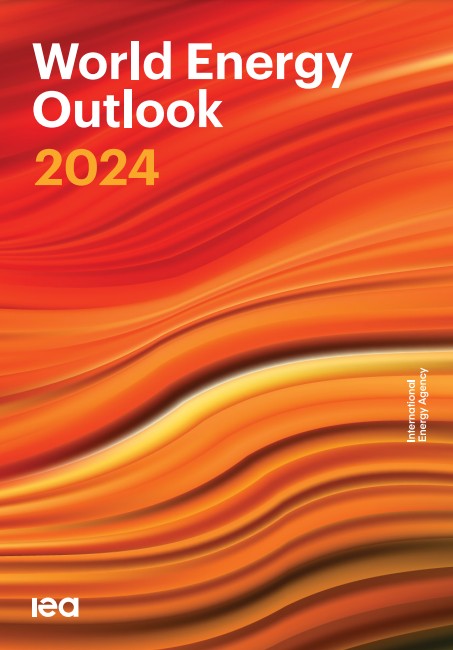
□ IEA는 2050년까지 전세계 전기 수요가 두 배로 증가할 것으로 예상함. ▲전세계적인 데이터센터 급증, ▲폭염빈발에 따른 에어컨 사용증가, ▲청정에너지 생산을 위한 전력 사용량 증가로 전기 수요 예측치를 작년보다 6% 상향 조정함. 보고서에 따르면, 전 세계의 전기 수요는 매년 일본 1개국이 늘어나는 것과 같은 속도로 증가하고 있으며, 새로운 수요의 대부분이 중국에서 발생할 것으로 전망함
□ 세계 2위의 경제규모를 가진 중국은 지난 10년간 신규로 늘어난 전기 수요의 3분의 2를 차지했으며 이 추세는 앞으로 수십 년간 지속될 것으로 예상됨. 중국은 2023년까지 전 세계 신규 재생 에너지 발전 용량의 60%를 차지할 대규모 풍력 및 태양광 발전 용량 확충을 추진하면서 자체 재생 자원을 활용해 이 새로운 수요의 대부분을 충족할 것으로 예상됨
□ 또한 보고서는 현재 글로벌 에너지 전환의 추진력이 매우 강해서 2030년 이전에 세계 화석 연료 수요가 정점에 도달할 수도 있다고 언급함. 이는 중국이 인도, 동남아시아, 중동 및 아프리카에서 증가하는 화석 연료 수요를 상쇄하기에 충분한 속도로 새로운 재생에너지 용량을 계속 구축할 것이라는 전망에 기반을 두고 있음. IEA는 이 상황이 원유와 가스 가격의 폭락으로 이어질 가능성이 높으며, 액화천연가스(LNG) 공급이 크게 늘어나면 폭락이 가속화될 수 있을 것으로 예상함
[출처] IEA“데이터센터,에어컨 등 2050년까지 세계 전기수요 두 배로” (2024.10.16.) / 한국경제
목차
Foreword 3
Acknowledgements. 5
Executive summary 15
1. Overview and key findings 21
Introduction 23
1.1 Scenario overview 24
1.1.1 Energy demand 24
1.1.2 Total final consumption. 25
1.1.3 CO2 emissions 28
1.2 What do fractured geopolitics mean for the future of energy? 29
1.2.1 Fossil fuels 29
1.2.2 Clean energy supply chains and critical minerals 32
1.3 Are EV sales hitting speed limits? 34
1.3.1 Trends in the EV market 37
1.3.2 Implications of the transition to EVs for the energy sector. 37
1.3.3 Key enablers to achieve net zero emissions milestones for EVs 38
1.4 How fast might demand for electricity increase? 39
1.4.1 Emerging market and developing economies lead demand growth in the STEPS 39
1.4.2 Exploring uncertainties in the STEPS 40
1.4.3 Clean energy transitions are driving rapid electricity demand growth 42
1.5 Is clean power generation growing fast enough? 45
1.5.1 Clean power is not yet outrunning global electricity demand growth 45
1.5.2 Clean power gets up to speed in most markets by 2030. 47
1.5.3 Clean power needs to scale up faster to get on track for net zero emissions 48
1.6 There is a wave of new LNG coming: where will it go? 50
1.7 What will it take to achieve energy access goals by 2030? 55
1.7.1 Access to electricity 56
1.7.2 Access to clean cooking 58
1.7.3 Investment needs to ramp up quickly 59
1.8 How to scale up clean energy investment in emerging market and developing economies? 61
1.8.1 Breaking down investment requirements. 63
1.8.2 Challenge of scale 66
2. Setting the scene 67
2.1 Context for the World Energy Outlook-2024. 69
2.1.1 Recent trends in energy demand and CO2 emissions 70
2.1.2 Macroeconomic context 73
2.1.3 Political and geopolitical uncertainties 75
2.2 WEO scenarios. 78
2.2.1 Policies. 79
2.2.2 GDP and population. 87
2.2.3 Prices 90
2.2.4 Technology costs 93
3. Pathways for the energy mix 97
3.1 Introduction 99
3.2 Overview 100
3.2.1 Energy efficiency 101
3.2.2 Renewables 103
3.3 Total final consumption 105
3.3.1 Transport 109
3.3.2 Buildings 113
3.3.3 Industry 118
3.4 Electricity. 121
3.4.1 Electricity demand. 122
3.4.2 Electricity supply 125
3.4.3 Power sector CO2 emissions 131
3.4.4 Power sector investment. 132
3.5 Fuels 135
3.5.1 Oil 137
3.5.2 Natural gas. 143
3.5.3 Coal 149
3.5.4 Modern bioenergy. 152
3.6 Key clean energy technologies 155
3.6.1 Solar PV 156
3.6.2 Wind 157
3.6.3 Nuclear 158
3.6.4 Electric vehicles 159
3.6.5 Heat pumps 160
3.6.6 Hydrogen 161
3.6.7 Carbon capture, utilisation and storage 163
4. Exploring uncertainties in the Outlook 165
4.1 Introduction 167
4.2 Exploring the uncertainties 168
4.3 Sensitivity analyses relative to the STEPS trajectory 170
4.4 Uncertainties in oil demand 173
4.4.1 Electric vehicle pace of growth 173
4.4.2 PHEV in electric mode operation. 176
4.4.3 Oil-to-gas switching in the Middle East power sector 177
4.5 Uncertainties in natural gas demand 178
4.5.1 LNG oversupply 179
4.5.2 Higher natural gas demand uncertainties 181
4.5.3 Lower natural gas demand uncertainties 184
4.6 Uncertainties in electricity demand 185
4.6.1 Data centres 186
4.6.2 Heat waves 189
4.6.3 Appliance efficiency in emerging market and developing economies 191
4.6.4 Implications of changes in electricity demand 192
5. Security, affordability and sustainability 195
5.1 Introduction 197
5.2 Energy security 198
5.2.1 Fuel security. 199
5.2.2 Electricity security 207
5.2.3 Security of clean energy supply chains and critical minerals. 213
5.3 Affordability and people-centred transitions 218
5.3.1 Energy bills 218
5.3.2 Energy employment 222
5.3.3 Energy access 225
5.3.4 Behavioural change 228
5.4 Sustainability 231
5.4.1 Emissions trajectories and temperature outcomes 231
5.4.2 Methane abatement 234
5.4.3 Air pollution and public health 237
5.5 Investment and finance. 238
5.5.1 Energy investment. 238
5.5.2 Sources of finance 242
6. Regional insights 245
Introduction 247
6.1 United States. 248
6.2 Latin America and the Caribbean 252
6.3 European Union. 256
6.4 Africa 260
6.5 Middle East 264
6.6 Eurasia 268
6.7 China 272
6.8 India 276
6.9 Japan and Korea 280
6.10 Southeast Asia 284
Annexes
Annex A. Tables for scenario projections 291
Annex B. Design of the scenarios 327
Annex C. Definitions 355
Annex D. References. 377
Annex E. Inputs to the Global Energy and Climate Model 389



